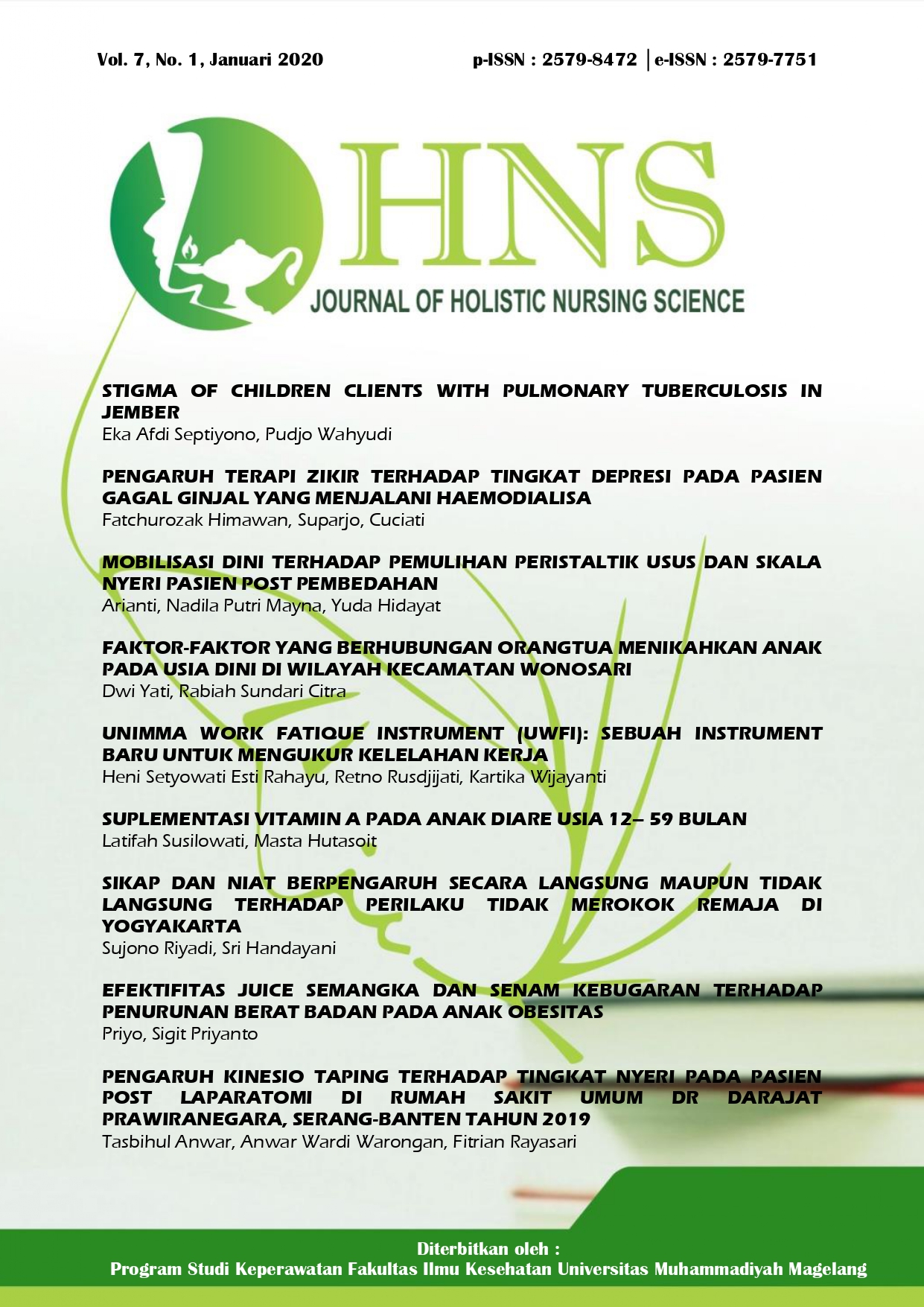SUPLEMENTASI VITAMIN A PADA ANAK DIARE USIA 12– 59 BULAN
Main Article Content
Abstract
Diarrhea is the leading cause of infant mortality in Indonesia. Data from the Bantul District Health Office showed that the diarrhea morbidity rate in 2015 was 4.57 per 1000 population. World Health Organization launched program to reduce morbidity and mortality due to pneumonia and diarrhea by recommending supplementation of vitamin A as an effort to maintain health since baby was born. The purpose of this study was to determine the correlation of vitamin A supplementation with the incidence of diarrhea in children aged 12 - 59 months in Kasihan 1 Public Health Center. This study was used case control design with a retrospective approach. The number of control and case group were 44 children of each. Researcher collected data of children aged 12 - 59 months who suffered diarrhea last 6 months then conducted a home visit to ask about the history of vitamin A supplementation in children. There was no statistically significant correlation between vitamin A supplementation and the incidence of diarrhea in children aged 12 - 59 months. Health workers especially nurses need to increase public awareness of vitamin A supplementation to children under five years old as a form of support for government program to prevent diarrhea.
Downloads
Article Details

This work is licensed under a Creative Commons Attribution 4.0 International License.
Authors who publish their articles in JHNS retain full copyright of their work. JHNS does not require authors to transfer their copyright to the journal or Universitas Muhammadiyah Magelang as the publisher. The authors grant JHNS a license for the first publication.
